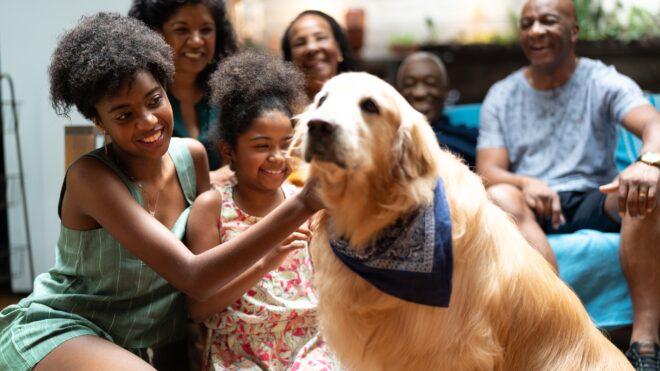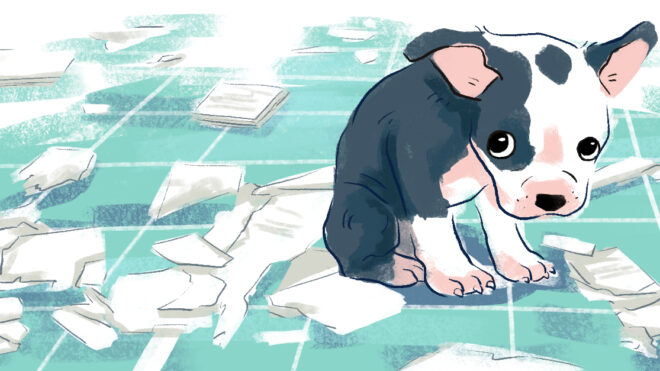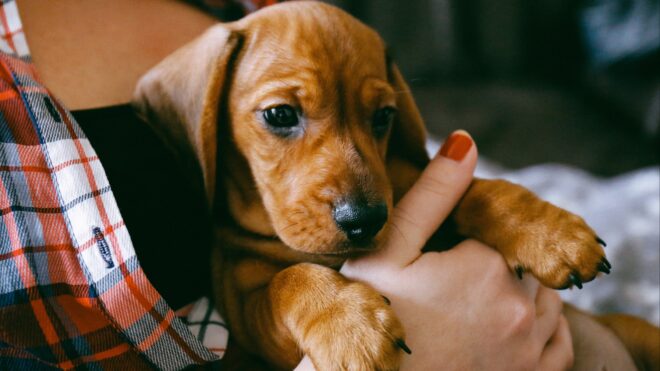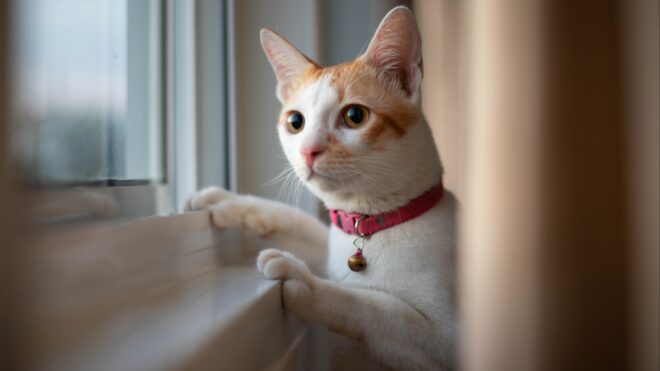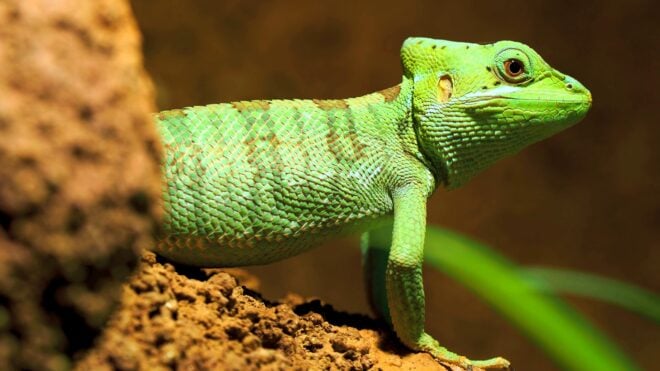
Between bones, balls, stuffies, and squeakies, there are many options for puppy toys. The Humane Society states on its website, “For dogs and other pets, toys are not a luxury, but a necessity. Toys are important to your dog’s well-being. Toys help fight boredom when you have to leave your dog at home, and provide comfort when they’re feeling nervous. Toys can even help prevent your dog from developing certain problem behaviors.”
As Zippia.com states, the pet industry is worth $222.93 billion. With so many companies competing for sales and developing pet toys that stand out, how do we know which ones are safe and best for our puppies?
LittleThings spoke with experts on how to choose the right toys for your puppy.
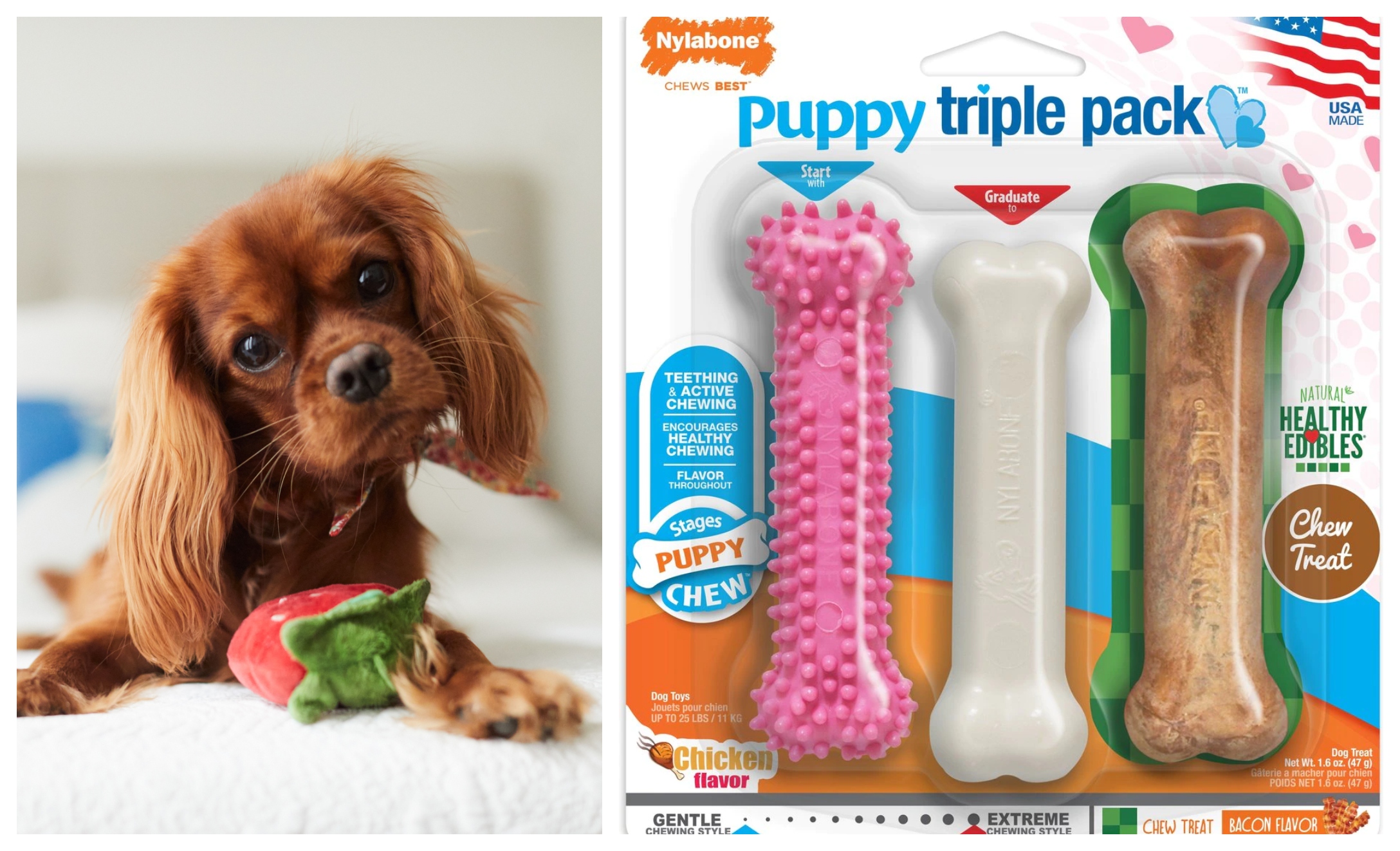
Dr. Jo Myers, practicing veterinarian on Vetster, advises pet owners to first evaluate toy safety. “Any toy has the potential to be hazardous. The most common problems caused by toys that we see in the clinic include broken teeth, GI blockages caused by swallowed toys/parts, bones getting stuck between teeth or around the jaw, and toys that break apart or become stringy and end up entrapping a foot or jaw."
“Large-breed puppies or excessive chewers may tear up certain toys too easily,” says Myers. “This means there’s a risk of your pup getting small objects caught in their throat or ingesting something hazardous like batteries. If this sounds like your little buddy, maybe opt out of plush or plastic toys and go for something made of dense rubber or canvas. Always supervise your pup when introducing a new toy, and remember no toy is truly indestructible.”
River Road Veterinary Clinic states online that marrow bones, rubber balls, small toys, and rawhides are the most dangerous dog toys.
Luke Silverman, founder and CEO of Bark Social, a premium dog lover’s social club and retail experience in Maryland, also warns, “Small, hard toys are not safe for puppies because they don't have the best sense of what is OK to swallow, so we stay away from any toys that can fit fully in their mouths. Rubber chews with some give made specifically for puppy teeth are preferred.”
You’ll also want to ensure a toy’s durability. Myers says, “You don’t want to break the bank buying a new interactive toy each week. Make sure what you purchase is made of material that’s durable enough to last more than the afternoon, but not so hard that it hurts your puppy’s tiny teeth. Some toys, such as laser pointers or revolving lights, are extremely durable — so long as you don’t drop them. Your puppy won’t actually be biting any sort of mechanism, so they can’t really destroy them.”
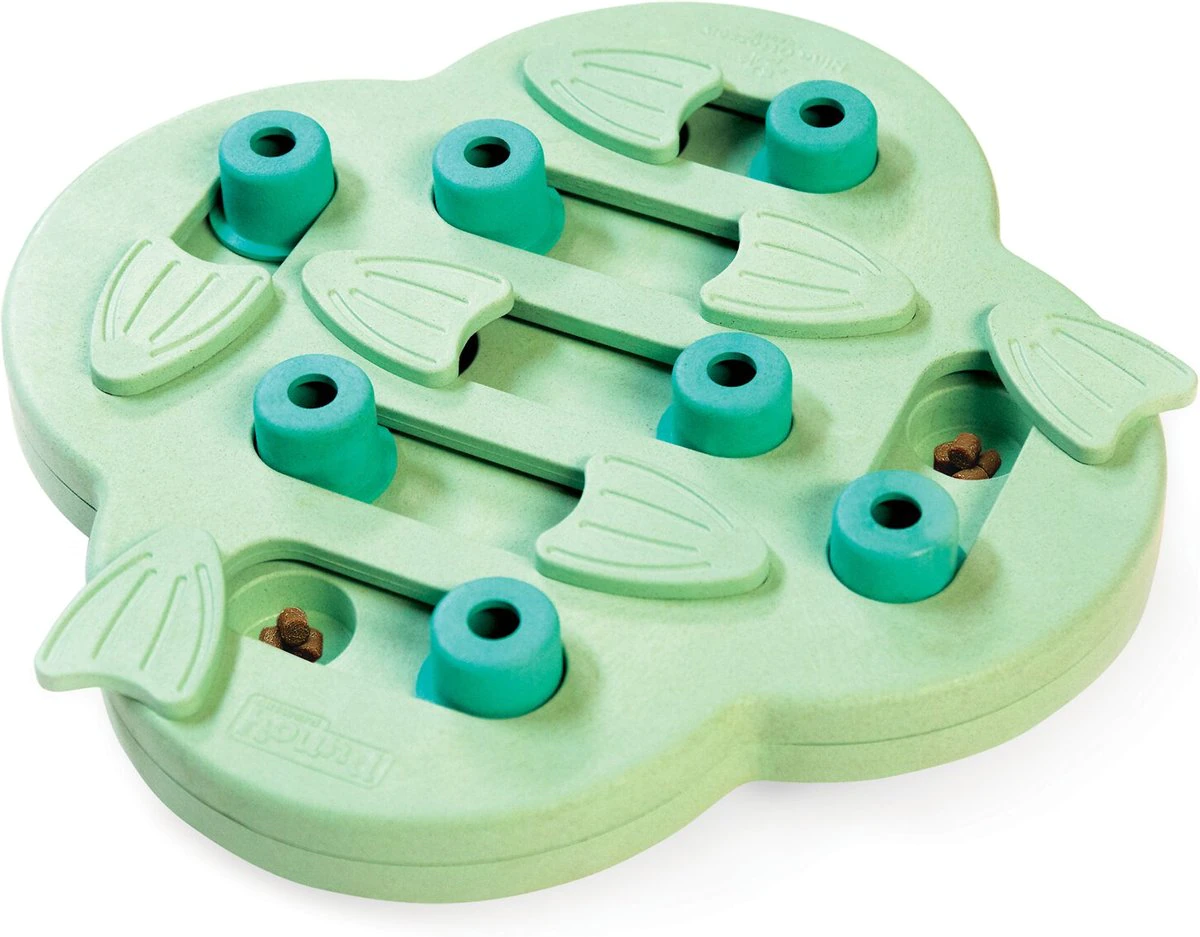
Myers says it’s important to consider your puppy’s temperament before choosing toys. “Is your puppy energetic, curious, fearless, and undaunted by new situations and opportunities? Then noisy, flashy, highly responsive toys are likely to be a good option. Are they more cautious and unsure how to approach unfamiliar things? In that case, you’ll want to go for a less lively toy. Something that doesn’t move or make too much noise. Puzzles may be your best solution here.”
Puzzles are one type of interactive puppy toy. Myers says, “An interactive puppy toy doesn’t require you to do much beyond set up. All you have to do is load them or turn them on, whatever they require. These toys stimulate thinking by dispensing treats, launching balls, or moving semi-autonomously. Some are puzzles; others respond to particular puppy behaviors. Generally speaking, they keep puppies stimulated in a variety of different ways without requiring constant, repetitive effort on your part.”

Interactive toys have their benefits, according to Myers. “It’s a truth universally acknowledged: puppies want to play all the time. But if you have anything else going on in life, such as work or a marriage or children, you just won’t be able to play as much as a puppy wants you to. It’s also not a good idea to let them be in charge of deciding when and how to play. Interactive puppy toys are known for entertaining pooches while you’re out, cooking, or helping with homework, or any other time you want to give your pup the opportunity to practice keeping themselves entertained.”
Silverman says, “The West Paw puzzle and chew toys are a great way to give puppies a snack and keep them occupied for a while. We also love general puzzle feeders — anything to engage their senses while exercising their minds.”
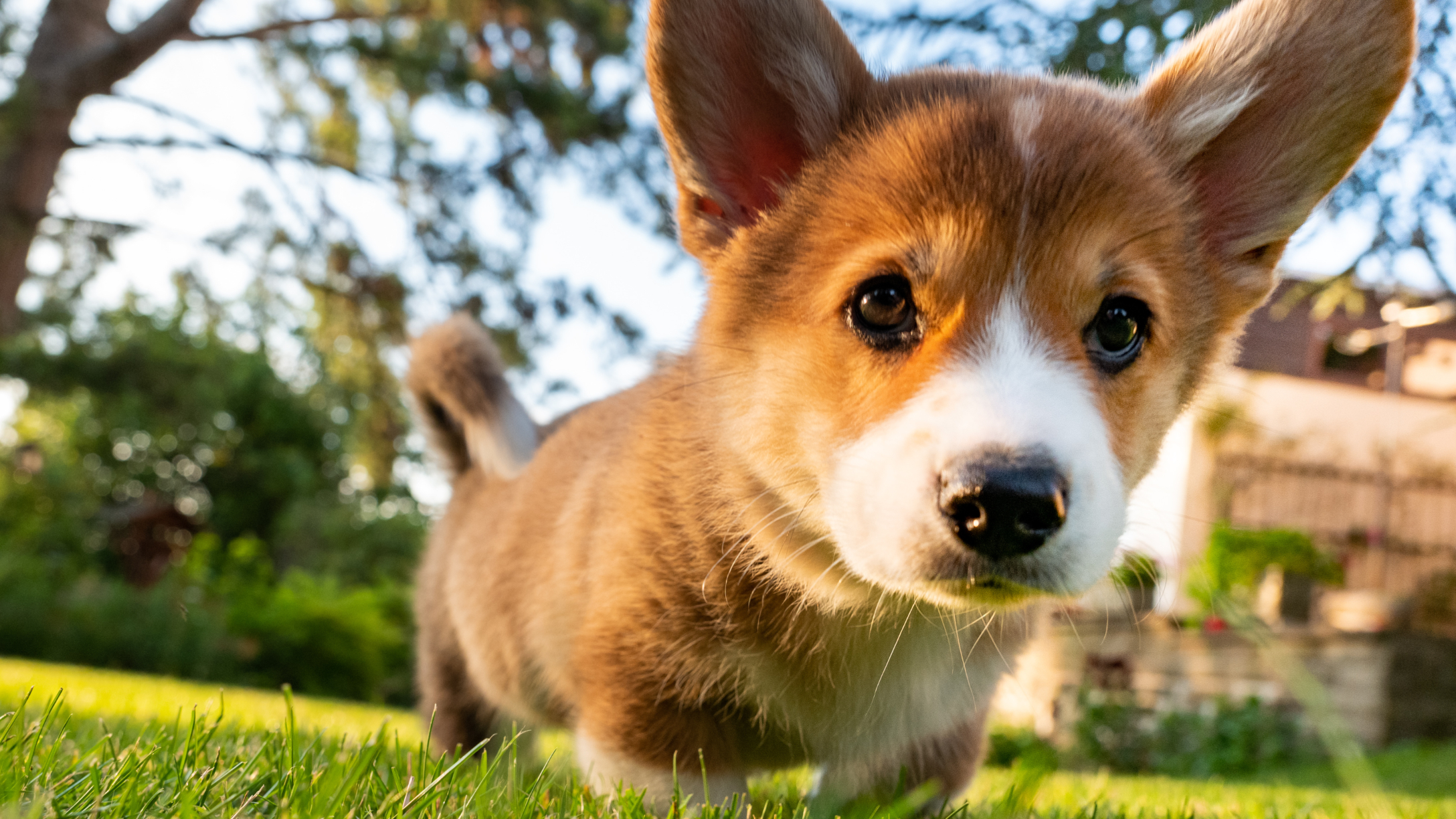
Myers says, “Most breeds were developed for specific purposes, so toys that allow them to exercise those skills are a great option.”
Good Housekeeping lists the Cavalier King Charles spaniel, basset hound, Irish wolfhound, French bulldog, Bernese mountain dog, Pekingese, Newfoundland, and boerboel among calmer dog breeds.
Myers says, “Terriers like toys that simulate prey. Furry toys that look like squirrels or mice or squirrels and squeak when bitten are a great option here. Small breeds that were designed for companionship like toys that are an appropriate size for them to pick up and carry. They’ll be happiest if you play with the toy with them.”
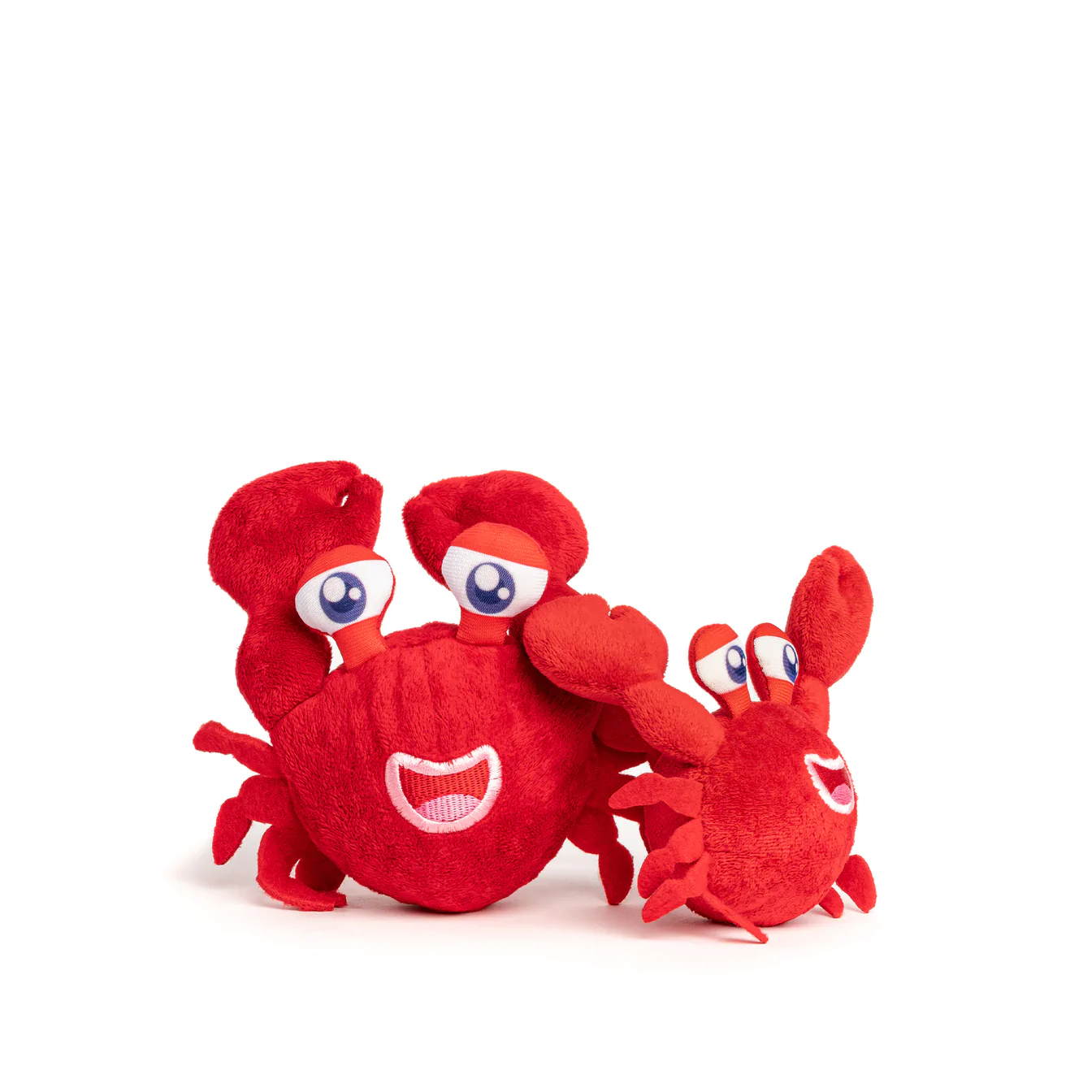
On the contrast, the American Kennel Club lists the American Staffordshire terrier, border collie, Brittany spaniel, Belgian Malinois, Dalmatian, Doberman pinscher, German shorthaired pointer, greyhound, Redbone coonhound, and vizsla among the best dog breeds for those with active lifestyles.
For those high-energy dogs, Silverman says, “We love our faballs by FabDog. Faballs are designed for dogs to actually rip off the outer layer and once they do that, it reveals a squeaky ball that then provides hours and hours of fetching fun.”
Other breeds are known as chewers. Tastybone.com cites Labradors, Chihuahuas, border collies, Jack Russell terriers, golden retrievers, and beagles among the breeds that chew more than others.
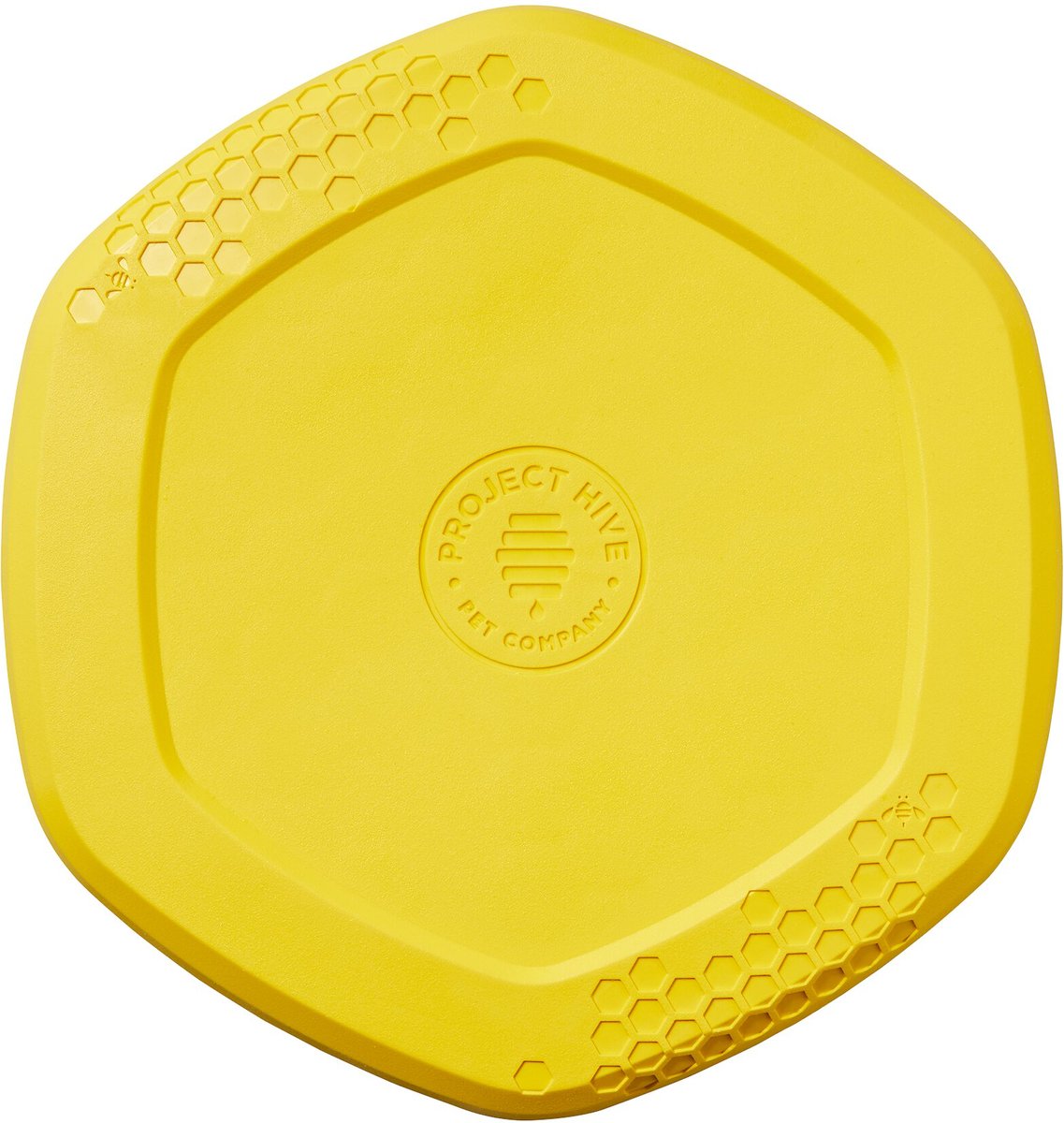
Myers says, “It’s no surprise that retrievers love to retrieve, but dogs of many other breeds, both large and small, enjoy a good game of fetch. Frisbees, tennis balls, and retrieving dummies are all fantastic toys for playing fetch. If you’re on the water with your pup, you can make your own water retrieving dummy by sealing enough water in a plastic water bottle to make it easy to throw. The remaining space filled with air makes it float and it’s an easy size for most retrievers to swim back with.”
Silverman suggests durable rubber chews for the strong chewers: “Frankie, our four-legged Bark Social President, rips through most toys, but hasn't made a dent in the WO bone yet. He loves chomping on it and spends hours trying to tear it apart, so far with no luck. This bone is also great at keeping dogs occupied because you can add some peanut butter to keep pups engaged for a longer period of time.”
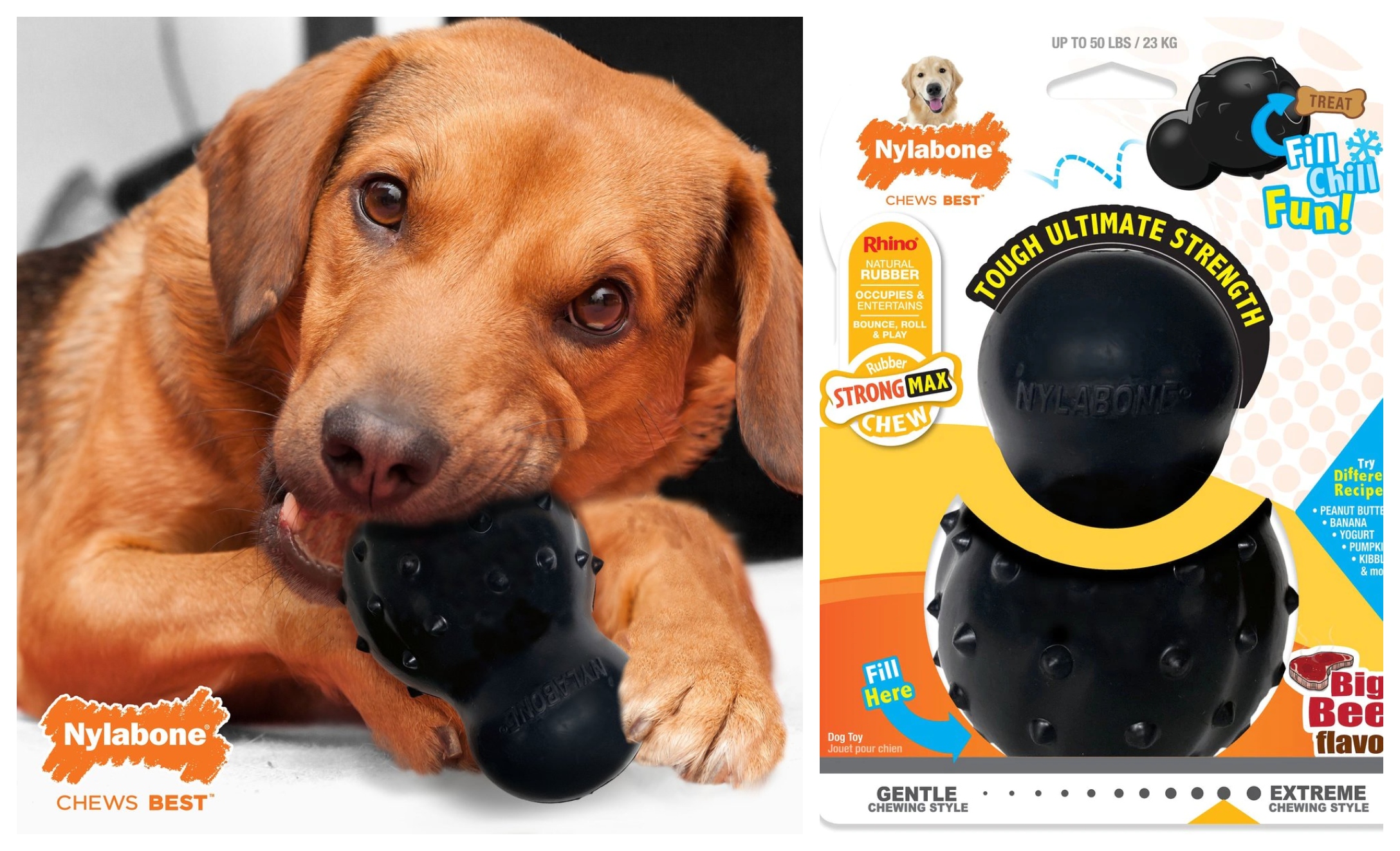
Myers encourages pet owners to consult a professional to identify the most appropriate type of toy for your dog’s specific breed, age, and living conditions. “The vet you connect with will be able to see your puppy in their natural habitat, playing as they naturally play, and will be able to make more accurate recommendations,” says Myers.
 $9.61
from
$9.61
from

